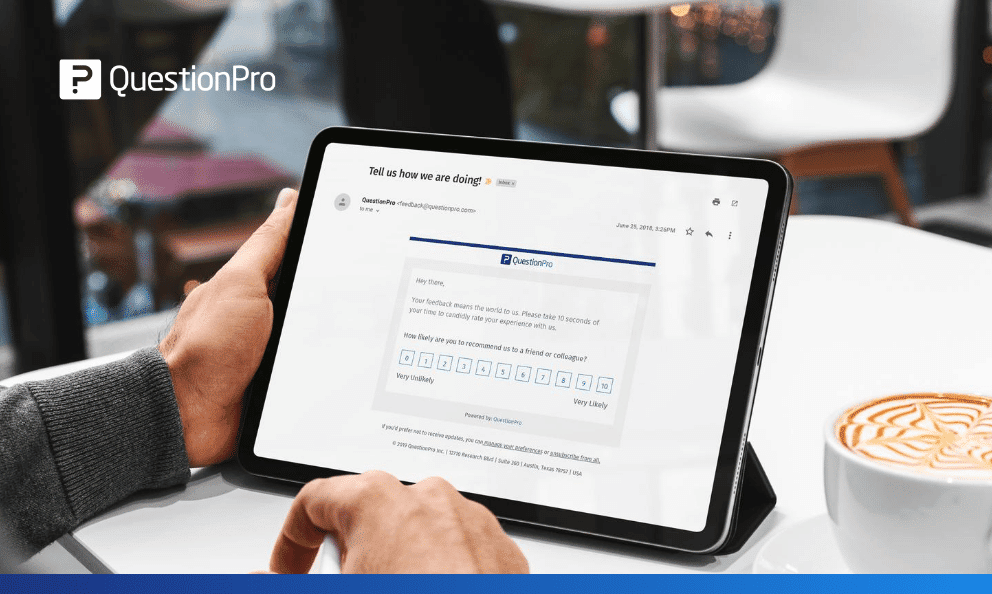
Customer experience management surveys take a delicate process; we can all agree. In a world obsessed with experiences, great CX is increasingly the desired destination rather than a mere add-on. So much so that Customer Experience is touted as the biggest brand differentiator by the end of 2020, overtaking price and product (the COVID encroachment has only accelerated this prediction).
“It takes 20 years to build a reputation and five minutes to ruin it. If you think about that, you’ll do things differently.” – Warren Buffett
While there are a lot of experimenting and hard lessons that every business needs to figure out for themselves when it comes to their relationships with customers, the obvious thing about customer experience management is how it’s all rooted in research. Hence, surveys!
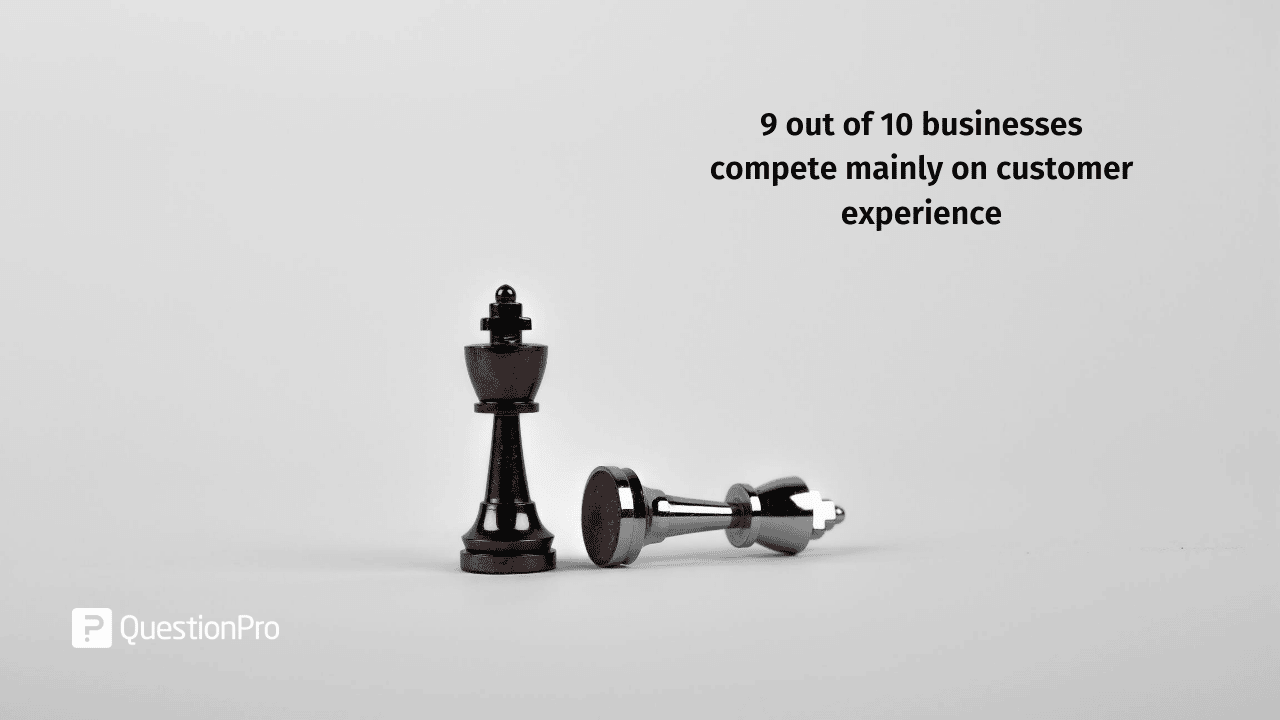
Plans that do not come with supporting data are worthless. The same holds in customer experience management too. In fact, Gartner suggests that more than two-thirds of companies now compete primarily based on customer experience. For companies looking to invest in CX smartly, here’s a quick guide on everything about surveys in customer experience management– the types of surveys, the kinds of measurements used to check CX, and the best practices in customer experience management surveys. As a bonus, we’ve also included a free survey template at the end of this guide. Happy surveying!
LEARN ABOUT: Effective Customer Success Plan
The three Customer Experience Management Surveys Types
While there are all sorts of surveys out there, the ones within customer experience can be broadly categorized into three- everything CX survey loosely falls into one of these classifications.
1. Relational surveys
As the name implies, it’s a quick summary of the customer’s entire relationship with the product/service/brand done infrequently or as a one-off. Most companies set to run this quarterly/yearly, and the goal is to figure out how the average customer rates his lifetime experience with the company.
E.g., Survey rating your experience as the customer of a coffeehouse chain.
2.Transactional surveys
Now, transactional surveys dig into the customer’s perceptions about a specific transaction, rather than the larger picture of the customer’s lifetime experience with the brand.
These customer experience surveys are particular to a specific point in the customer journey and can get you accurate insights into the performance of core functions/departments of a company. They are always carried out post a transaction or completion of a specific journey, to assess how smooth the customer’s experience was during that particular transaction.
E.g., The survey sent after a customer buys his favorite coffee to understand his experience with that particular transaction/purchase.
3.In-moment surveys
The top reason customers switch brands is because they feel unappreciated.
As a Customer Experience expert, your goal is to make them feel valued and heard throughout their journey with you. One way to do this is by ensuring that there is always a system in place to listen to the customer’s voice.

Think of the feedback question you receive right after you got off a call with a customer rep, asking you to rate the interaction with the support personnel?
This is as instant and real-time as it gets. In-moment surveys are run post-interactions, unlike the more widely sparse post-transaction surveys.
E.g., Asking to rate the experience while the customer is waiting in a queue, logs in on the app, or orders coffee and a bagel online.
LEARN ABOUT: Customer Experience vs. Customer Service
Customer Experience Management Survey Measurements/Scores/Questions
What are the common metrics brands and competitors use to measure customer satisfaction or check the quality of their customer experience? Every Customer Experience Management team worth their salt would compare their performance with their competitors and plan accordingly. Just what is the benchmark in your industry?
1. Net Promoter Score (NPS)
“On a scale from 0-10, how likely are you to recommend us to a friend or colleague?”
The classic question you are asked everywhere to test your loyalty or lack thereof to a brand/product/service is an NPS question. More often done as a two-part questionnaire, the above is the first part of an NPS survey. Ask a follow-up question to gauge why the customer rated you the way they did, and you are done!
It is the simplest of questions to gather shrewd insights. NPS surveys get you a drill-down of your Promoters (brand fans) as they are the ones who rated you flatteringly high- a nine or ten on a scale of 1-10. These are keepers, the loyal brand enthusiasts who’d return and refer you each time.
Likewise, NPS also indicates your share of Detractors (nay-sayers) who’d rate you an unhappy 0-6. Watch out for this group as they are the ones you let down. And, they are capable of doing much damage to your brand perception.
There is also the in-between Passives (meh-people) that may have scored you an unenthusiastic 7-8. They are easily snatched away by the competitors if you don’t invest in their experience urgently.
NPS surveys are easy to run, widely used everywhere across industries, and a reliable anchor to tie your customer experience efforts to.
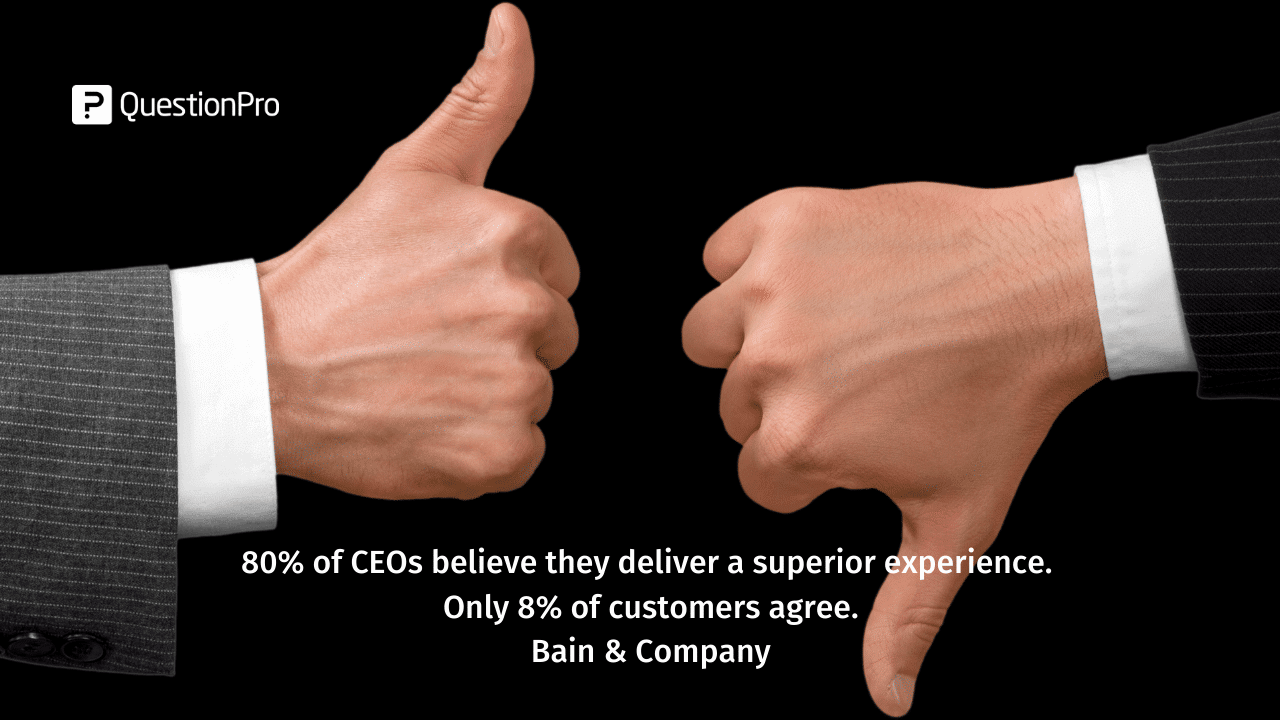
Why use NPS to measure customer experience
Identifying how willing a customer is to recommend a product or service is a shortcut to test your average customer’s loyalty. NPS score gives you a quick overview of your relationship with your customers and highlights areas where there is scope for improvement.
An alarmingly high number of detractors can indicate that you are going the wrong way and that a sizable chunk of your existing customers have no intention of doing business with you again. It prompts businesses to take effective corrective actions, entice the audience who are probably already looking up alternatives and bring them back.
Do you remember when Dominos publicly admitted that their pizza tastes like cardboard and went around to fix it? The unconventional campaign won back their staunchest critics and made the world fall in love with Dominos pizzas again. It’d have been an impossible feat for the then 60-year-old company, but the key differentiator was how they were willing to listen to their customers and do what it takes to fix the root cause.
Yeah, the best part about using NPS is how effective they can be to identify the customer segment you may otherwise lose to your competitors!
Why choose QuestionPro to run NPS surveys?
For a company investing in CX, it makes sense to choose a tool that promises a seamless experience, wouldn’t you agree? To measure customer experience, it’s important to anchor your KPI’s around NPS, which is exactly what QuestionPro’s CX infrastructure is built around. Map your journey and integrate all touchpoints to be analyzed in a centralized system and automate feedback collection. Get an overall and segmented view of your NPS scores based on location, product, business group, etc. Additionally, get NPS comparison and trend analysis results on intuitive dynamic dashboards that help you get a real-time view of how your business is performing overall and by a drilled-down view. And what’s best is creating and analyzing NPS surveys is as smooth as it can get with QuestionPro.
QuestionPro’s very own NPS+
QuestionPro took the traditional NPS question and supercharged it to analyze the real root-cause behind the chosen scale and powered it with churn risk prediction. NPS+, the built-in exclusive question type of QuestionPro, comprises a two-part questionnaire with an additional comment box.
Who can best tell us how to fix our problems other than the ones who experienced it themselves? Why then aren’t we asking them for their feedback on what was truly expected? Moreover, as a company we already know what are those top 10 issues that customers are bound to face, so why not list these out to check if it was one of the problems? This is exactly what the NPS+ question is designed to do!
A combination of NPS, root cause, and a voting mechanism ensures customers are not just providing us feedback on what their experience was, but also ideating alongside to tell us what they were truly expecting and what needs to be done to bridge that gap.
2.Customer Effort Score (CES)
“How easy was it to deal with our company today?”
Does your process make them jump through the hoops? Is it hard to get hold of a real customer service agent? Will a simple sign up take them ages? CES tells you if you are doing it well or making it unjustifiably hard.
Customer Effort score measures how effective you were in creating a comfortable experience for your client. Forrester emphasizes that making it easy for your customers to find and engage with the value is a vital component of the whole customer experience.
LEARN ABOUT: Client Management
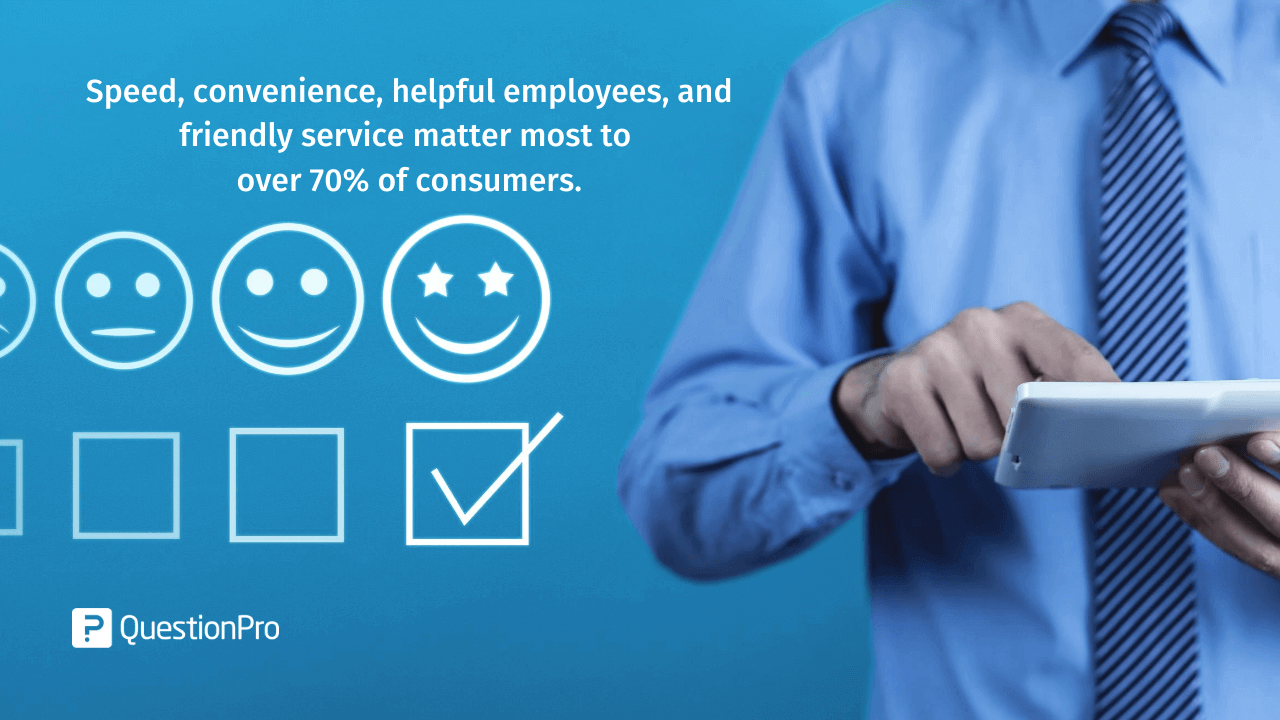
Why use CES to measure customer experience?
CES is a simple metric, but also enormously precise! In a world where effortlessness is the middle-name of all customer-facing businesses, Customer Effort Score checks how well they perform in this regard.
Statistics indicate that customers are willing to pay more for an easier experience. And CES sheds light into the areas where you need to focus more. Frustrating roadblocks and deal-breaking hiccups are identified with a simple CES survey, and you can even use it to run effortless A/B testing.
Customer Effort Score is an increasingly flexible measurement and can be applied across channels, thanks to which this simple score is widely used everywhere.
Why choose QuestionPro to run CES surveys?
QuestionPro has a mine of useful templates for any company wanting to check its CES score. These expert-curated templates and references help identify exactly what your customers think and how to improve your products, services, or brand image.
Moreover, QuestionPro’s rich features, accessible pricing, and unfailing customer support are sure to blow you away!
3.Customer Satisfaction Score (CSAT)
“How would you rate your overall satisfaction with the [goods/service] you received?”
CSAT scores can be used in all kinds of surveys- relational, post-transaction, post-interaction, or anything in between. It’s smoothly incorporated into any type and fits squarely.
CSAT is a straightforward metric, often referred to in percentages, that measures customer satisfaction. The icing on the cake is how simple it is- you can determine at a glance how effective you were in producing customer happiness with this score.
Why use CSAT to measure customer experience?
Customer Satisfaction score offers a bird’s eye view of the customer’s overall satisfaction with a specific product or service.
As a score that summarizes your overall interactions with customers, CSAT is best used when you segment your audience and then apply the score. For instance, this straightforward score can lend you precise insights when applied to categories- such as departments, regions, product offerings, use cases, or demographics and then analyze the data.
Why choose QuestionPro to run CSAT surveys?
CSAT surveys are considered one of the most flexible survey types, and they are equally effective across all distribution channels- be it email, SMS, pop-ups on websites, or as in-app surveys. QuestionPro has an edge here over our competitors by being the most intuitive and feature-rich platform around.
Moreover, the customer experience management platform has an incredible pricing structure with even high-end features that can be used for free. Granular insights or broad overviews-whichever you are after- QuestionPro CSAT surveys can assure you a superior data collection experience!
Wrapping up…!
Knowing who to survey, when to survey, and how to survey is vital to any Customer Experience Management surveys program’s success. Should you go with an NPS survey or check your Customer Effort Score? Or will a simple CSAT survey do the trick? Here’s a quick vis-a-vis comparison of the three kinds of measurements popularly used in the Customer Experience front.
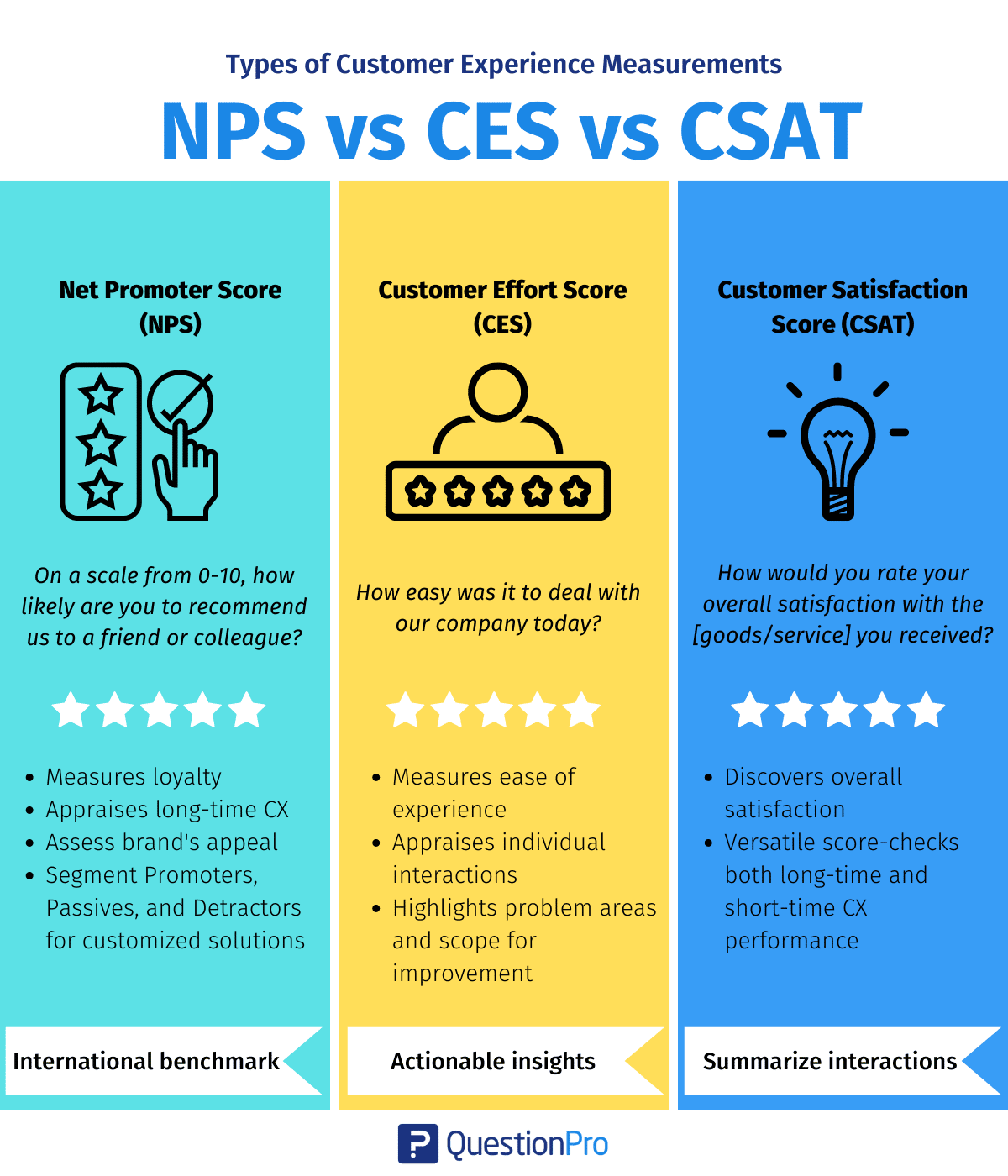
Finally, here’s the Customer Experience Survey template you were promised- enjoy! Also, there’s so much more left where this one came from. Do check out our customer experience survey templates library or reach out to talk with a Customer Experience consultant.
QuestionPro offers some of the most advanced customer experience tools available. Gain valuable insights into your customers’ thoughts and feelings using QuestionPro CX software today.







